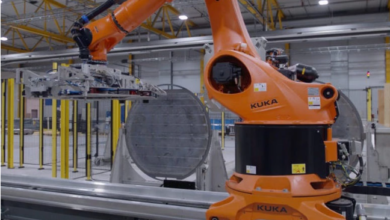German companies join forces for hydrogen projects funding

Six leading companies have joined forces and jointly applied for IPCEI funding to support their hydrogen projects. Five out of the six companies are based in Saarland, Germany. These companies have their projects for developing a green hydrogen economy in Germany, France and Luxembourg.
The partner companies are Steag (an energy company), Siemens Energy (a plant manufacturer), Creos Deutschland (a gas network operator), the Saarbahn (a transport company) and SHS – Stahl-Holding-Saar (with the companies Dillinger and Saarstahl).
They have developed a joint project idea from the production to consumption of green hydrogen. The proposal has now been jointly submitted to the German Federal Ministry for Economic Affairs and Energy for expressions of interest under IPCEI (identify important hydrogen projects of pan European interest). The projects are:
- mosaHYc- transport of hydrogen: It is a joint project where Creos and the GRTgaz want to use the existing gas infrastructure to build a 100 km cross-border high-pressure network for hydrogen transportation. This would connect various line sections in the Völklingen (Germany), Carling (France), Bouzonville (France) and Perl (Germany) areas.
- HydroHub Fenne: Steag and Siemens Energy plan to build two 17.3 MWel with 664 kg H2/hour (equivalent to 5,800 tonnes of hydrogen annually) in the Saarland Völklingen. The plant will use PEM electrolysis technology. It would be built at an existing Steag power plant and will source renewable power for electrolysis.
- TraficHdeux – public transport with fuel cell vehicles: It is initiated by the Saarbahn to develop the infrastructure for operating cross-border public transport with fuel cell trains and buses. There is also a plan to build a hydrogen refuelling station on the Steag power plant site in Völklingen. Moreover, a small-scale electrolyser is to be built for a stable supply until connected to the mosaHYc line.
- H2SYNgas (SHS – Stahl-Holding-Saar) As part of the H2SYNgas innovation project, technology is being developed on a blast furnace of Rogesa Roheisengesellschaft Saar mbH, a joint subsidiary of Dillinger and Saarstahl, which enables the use of its own process gases as well as hydrogen for the blast furnace process. The synthesis gas generated during processing is enriched with hydrogen. This hydrogen-rich mixed gas is then used as a reducing agent for the reduction of iron ore.
Meanwhile, in a separate development, seven companies from the consortium of the ‘GET H2’ initiative also submitted a single expression of interest for funding under the IPCEI program. The seven partners are BP, Evonik, Nowega, OGE, RWE, Salzgitter Flachstahl and Thyssengas, all of them partners in the ‘GET H2’ hydrogen initiative.
The Get H2 consortium wants to develop a cross-border infrastructure for hydrogen. The hydrogen would be produced in Lingen (Emsland) through electrolysis which would be supplied to the BP refinery in Gelsenkirchen. For this purpose, an electrolysis plant with a capacity of more than 100 MW is to be built at the RWE power plant site in Lingen. The gas would be transported using the existing lines. From 2025 onwards, the connection of existing cavern storage facilities and other H2 production facilities and consumers is already considered.
